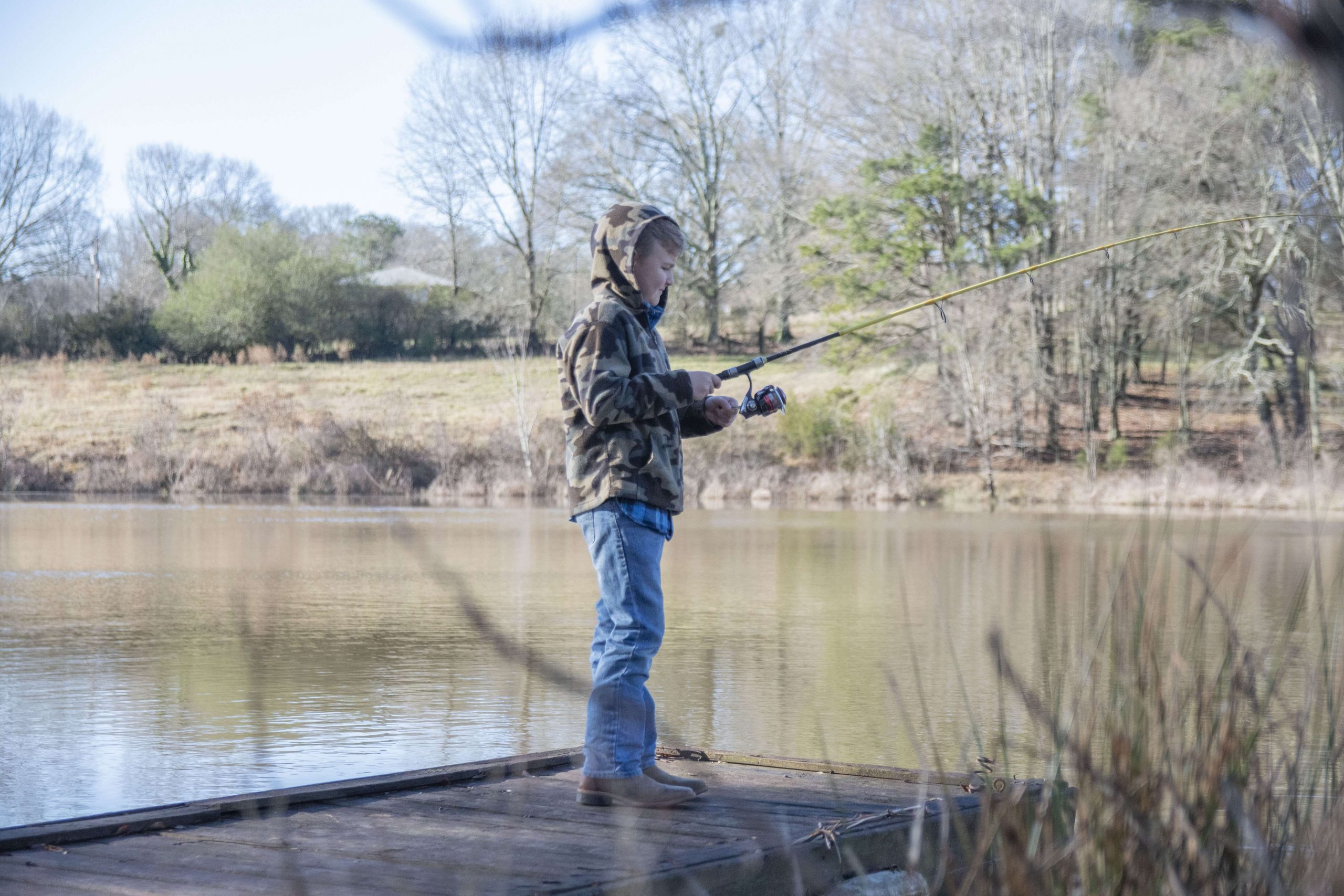
How do you know when a fish bites? Several things could happen. You might feel a hard jerk on your line or see the line move. If you’re using a bobber and it goes completely underwater, that’s a sure sign. But a slight movement of the float could mean a fish is about to swallow your bait or lure, too.
When one of these things happens, you should reel in slack and keep your line taut. This increases sensitivity so you can feel the bite and be ready to set the hook, an action that causes the hook point and barb to penetrate the fish’s mouth, reducing its chance of escape.
After you reel in the slack, point the rod tip toward the fish and then snap the rod tip back, either toward your shoulder or to the side. Then, after snapping the rod, begin reeling. This is important because it helps ensure the fish gets hooked. From this point, keep constant pressure on the fish and reel it toward you as it tires.
Fish react in different ways to the sting of the hook. Some jump. Some head for cover. Some swim straight away. It’s up to you to play, or fight, the fish properly until it is near enough to land.
Playing small fish is easy. They’re not strong enough to give you much of a fight except on extremely light tackle. Playing big strong fish like bass, catfish, pike, stripers and muskies is another story altogether, especially when light tackle is used. With heavier rods and stronger line, you may be able to power them in quickly. But on lighter tackle, the job will be more difficult and time-consuming. Play the fish carefully or you risk losing it.

Rule number one is to always keep your line tight, even if the fish is running toward you or jumping. A fish can throw a lure or spit out a hook much easier if the line is slack.
Rule number two is don’t fight the fish with the reel. Without reeling, lift the tip of your rod until it’s pointing above your head. then reel as you lower the rod tip back down to about 45 degrees, keeping even pressure on the fish. Pull up, reel down. Repeat.
The idea is to allow the bend or flex of the rod to wear down the fish. Play the fish with your arms and the rod, and store line on the reel. Let the rod do the work.
If you’re using light tackle, you won’t be able to pressure the fish like you can with heavy tackle. But if you know you’ll be fishing areas with weeds, timber and other thick cover, you can go prepared with heavier tackle so you can prevent fish from tangling your line and breaking off.
The biggest mistake you can make when playing a big fish is getting in too big of a hurry. If you’ve hooked a green fish full of fight and try reeling too fast, you risk pulling out the hook or snapping your line. Instead, unless the fish heads for dense cover, be patient and play it without unneeded pressure. Let the rod do its work while the fish is fighting, then start reeling in line as it becomes less resistant.





